If you happened to be born with two X chromosomes, you’ve probably heard a couple of these lines.
“What’s your name, girl? You got a name? How about a number?”
“Mmm… You got some legs on you, girl.”
“Need a ride, beautiful?”
These situations – and several others – are part of HOLLABACK: Red, Yellow, Blue, a comic book on street harassment from the Philadelphia branch of the Hollaback! organization. We had the opportunity to speak with the women who worked on the project: Director Rochelle Keyhan, Deputy Director Anna Kegler and Creative Director Erin Filson.
Girls in Capes: Why do you think a comic book is a good medium for talking or teaching about street harassment – what street harassment is and what precisely is troublesome about it?
Erin Filson: I think comic books – I mean, you have a very wide and a very big audience for comic books. It appeals to men and women and children as well. We were trying to reach out to guys, it keeps them about the issue, and it makes it easier to do with a medium that a lot of them – are reading comic books for a while. Also, we’re trying to reach out to groups around age thirteen – you know, middle school, high school age kids – because other cities that we’ve done have shown that street harassment starts out really young. I think that comic books in general usually – we have this idea that they deal with ideas like justice and good versus evil and power and that sort of thing, so they kind of already have that language in place – you know, that people are expecting comic books to deal with issues like that. I also think it’s cool that right now, comic books – even ten years ago or five years ago were kind of on the outskirts of culture, and now they’re in the middle of it, shaping culture, so I think it’s really opportune time to be using a comic book for educational purposes.
Rochelle Keyhan: I think another point about the fact that we use a comic book, too, is that people can take it and read it in private and sort of digest it and process it in their own time, and it’s accessible, and Erin did such a good job of not making it too aggressive. Also, they can share it … and give it to other people, and they can read it in their own time. It’s just so powerful as a tool.
GIC: How has the community reacted to the comic? Have you guys heard feedback from the readers at all?
EF: I’ve only heard good things so far. Wizard World [Philadelphia] was where we got the most immediate feedback, so when people would come up and right away, they were excited or interested – a lot of women were like, “Oh my gosh, thank you, this is awesome” just right off the bat. And a couple people even – a lot of guys picked it up, which was really cool, and a couple of them came back the next day and said they’d read the comic and really liked it. From the local comic book stores and stuff that we’ve gone to, they’ve all had a pretty excited, positive reaction also.
Anna Kegler: We’re really looking forward to hear more of the reactions from the general public. We started this campaign through a crowd-fundraising site called GoFundMe, and we just this week mailed the final comic books to all of our donors… But like Erin’s said, it’s been overwhelmingly positive so far.
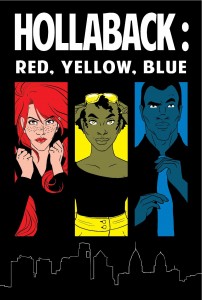
Hollaback: Red, Yellow, Blue follows three characters who experience street harassment as either the object of harassment or as a bystander.
RK: One guy at the comic con bought it and he loved it so much, he emailed me afterwards and was breaking it down, talking about how one time he was a bystander and the girl – he felt like he needed to protect the girl and he talked to the guy afterward and he was telling him to stop and he was asking questions. … It was so exciting to see he was applying it to real life and trying to figure out how he could be better.
GIC: This one’s more for Erin – did you draw inspiration for the characters or the comic itself from the Hollaback website or from other experiences?
EF: A lot of the things that guys say in the comic have been said to me. Especially when Red is down in the subway – I think pretty much everything that guy says to her was said to me at some point when I was waiting for a bus after work, so a lot of it is just stuff that’s happened to me or that I know has happened to my friends. A lot of it was just pulled from life.
GIC: About how many comic shops have you visited in the Philly area?
EF: I think we’ve gone to about three or four. A couple of them approached us, actually, when they heard about the project. I know the one guy came up to us at [Wizard World Philadelphia] Comic Con and said ‘oh, I heard about this, I would really like to have you guys come by and do a table or something.’ They’re on South Street, and he was like, ‘street harassment happens every day right outside my shop. We need to get this kind of thing out there.’ So that was really cool.
GIC: You were talking about Comic Con a little bit – well, kind of a lot – and you’re talking specifically about Wizard World. Do you feel that ending street harassment or harassment education in general has any real direct impact on the geek community at large?
EF: I think geeks in general respond really well to things that are kind of call-to-action, hero kind of stuff. I know that whenever I have a chance to be a hero or make a difference, I’m like ‘oh, that’s exactly what I want to do,’ because it’s what all the characters that I like in comic books actually do. I think and I hope that that’s pretty much across the board with geeks – you kind of get pushed to the fence growing up and you’re kind of weird, so when you see things like this when you can stand up for other people and express those characteristics of being a hero, I think that really – it really resonates with me. I don’t know, does that make sense?
GIC: It really does.
EF: So I would really hope geeks would really respond to something that’s like, hey, in your normal everyday life, you can do something like this and help this person. You know. Just like Spider-Man would.
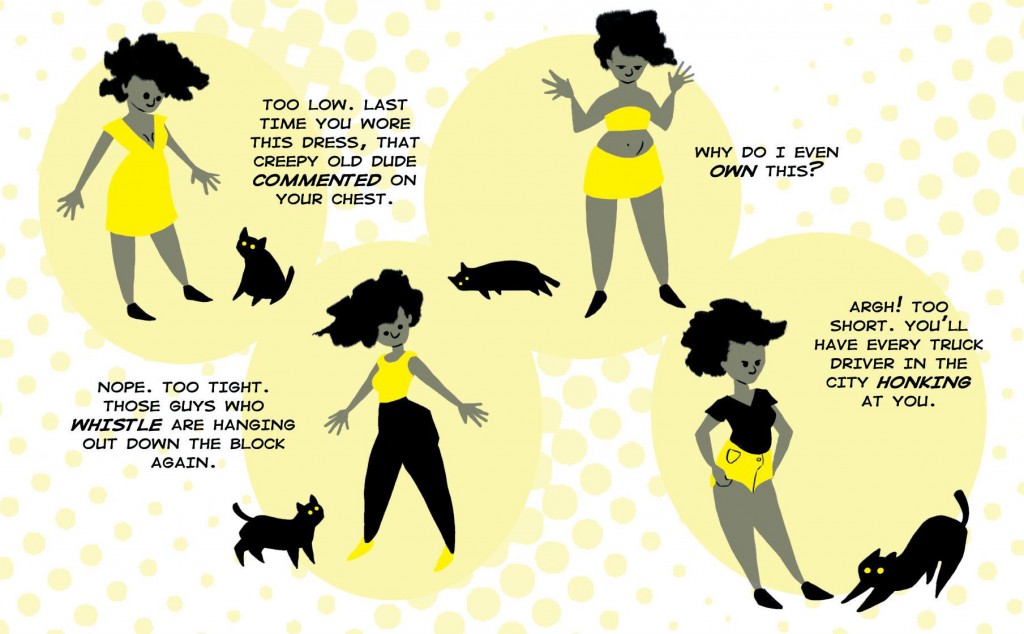
In this detail from the comic, Yellow goes through the decision-making process many women do daily.
GIC: Who would you say is really the target reader of the comic – if you had to pick just one type of person who you think really needs to hear the message?
AK: I would say it’s mainly geared towards younger people, so I guess – middle school’s a great time to start talking about street harassment issues, and so I would say that would be the age. Middle school and high school would be the ideal people to see it.
GIC: I saw in one of the project updates that you’re developing an interactive online experience. Could you tell me a little more about that?
EF: There’s a breakout character in the comic book who is the Green character at the end, and so the online comic is mostly going to feature her, and it’s mostly like you’re playing as her – like a Choose-Your-Own-Adventure-style online comic book. She’s trying to get home or going about her day, and you encounter different scenarios through her eyes, either people are harassing her or she’s a bystander to another character being harassed. Then the player will get to choose how they respond and react to the situation. It’ll be a kind of learning experience. You can choose answers that are either helpful or are kind of, you know, back down and walk away, just kind of will teach you what would be a positive reaction when you’re facing different harassment on the street or if you see it happen or something like that.
AK: We’re hoping that it will be very good way for students, especially, in workshops in schools to actually see these scenarios and have to think through it themselves instead of seeing it in a comic book, where there’s only one storyline. This is how the character reacts, and this is what happens. But in real life, you have a lot of options for what you’re going to do in any scenario, and there’s not a clear way to know what will happen as a result of each possible reaction. We do keep calling it a choose-your-own adventure amongst ourselves, and it is, but it’s not that typical choose-your-own-adventure where you do A, and then B happens. We kind of want the result of your choice to be something that’s kind of discussed and for students to really delve into it and think about what’s happened in their own experiences or their friends’ experiences.
RK: I just think it’s really exciting that we’re doing something so visually engaging, and hopefully younger children who wouldn’t be that interested in our workshop might be more willing to participate. We’re really excited.
Excited to check out the comic, but don’t have one in your stack? Never fear – Girls in Capes has you covered. Enter our Rafflecopter giveaway below – you can win one of three Hollaback: Red, Yellow, Blue prize packs, including a copy of the comic book, a set of bookmarks, and a pin.
Make sure to leave a comment answering this question: Why do you think it’s important to talk about sexual harassment in the geek community? You can also get an easy entry if you follow Girls in Capes and Hollaback! Philly on Facebook and Twitter.
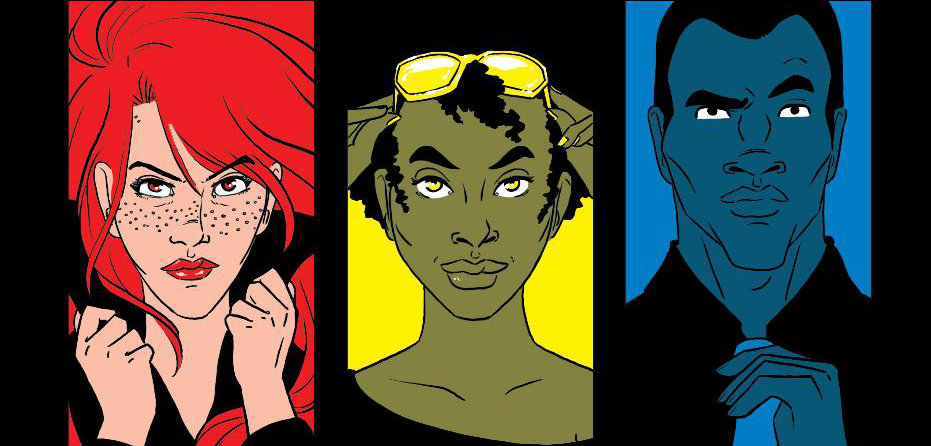
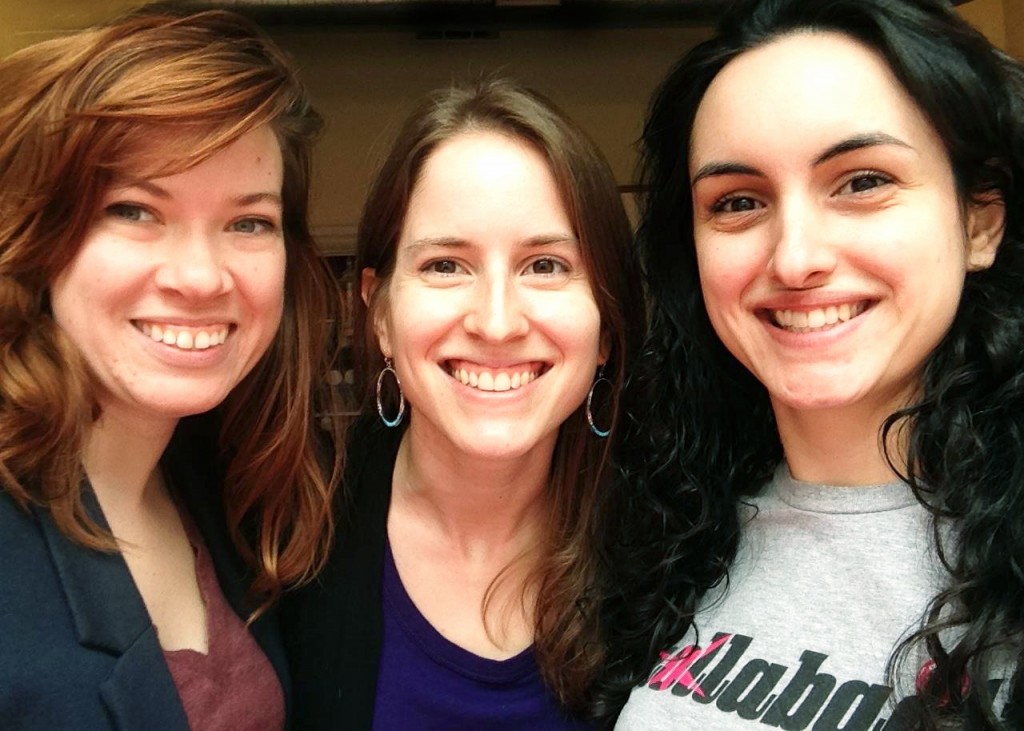

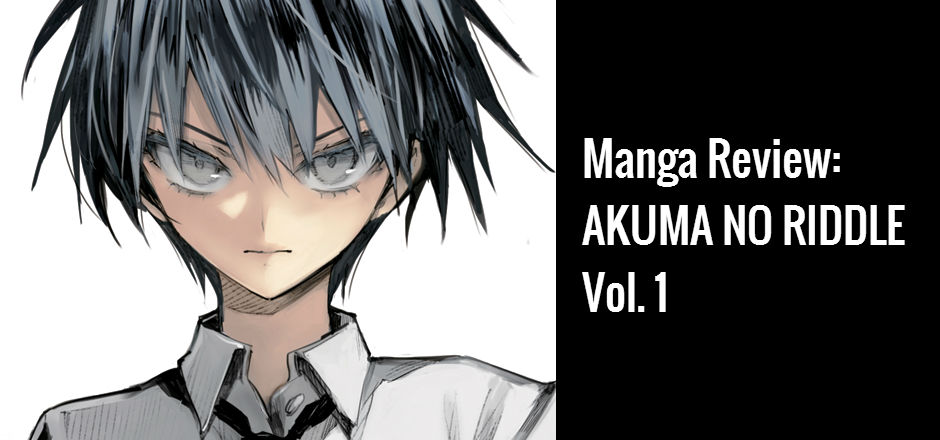
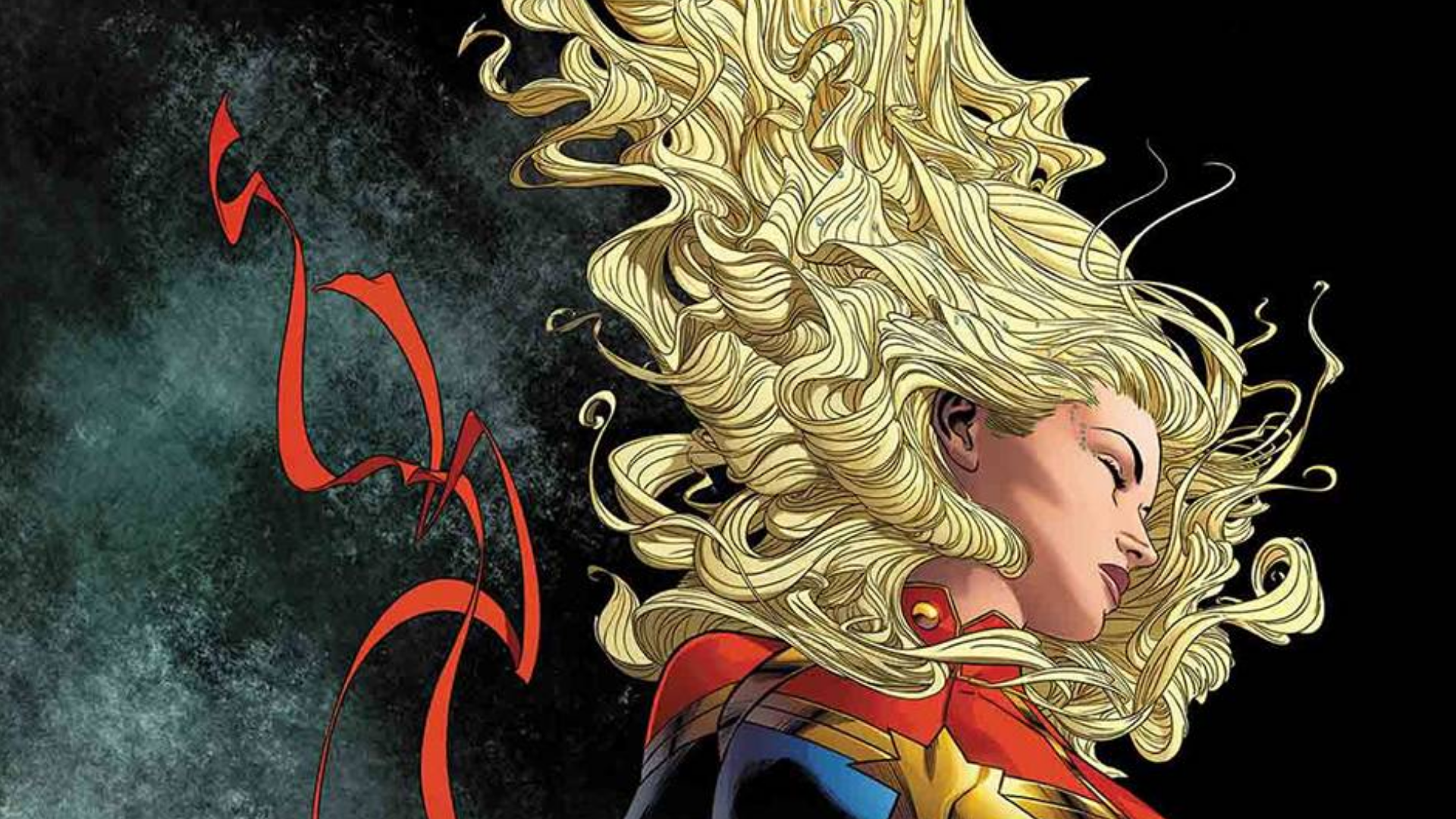
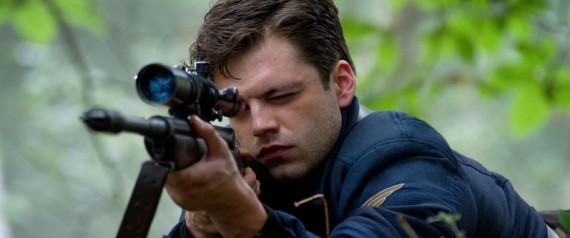
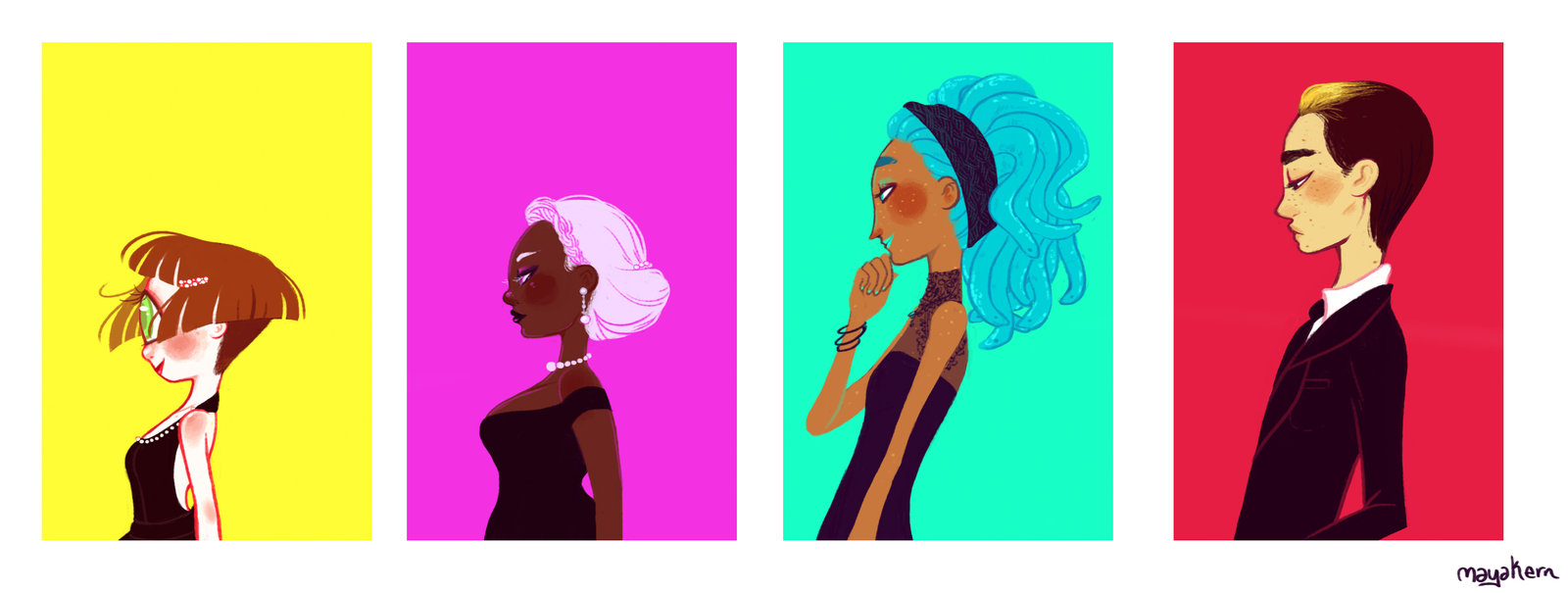

I remember going to Wizard World Philly Comic Con thinking that there might be situations with cosplayers. Luckily, I didn’t see anything like that, but it was awesome that Hollaback was there.
Their launch event was fantastic, too, and the comic is really wonderful.